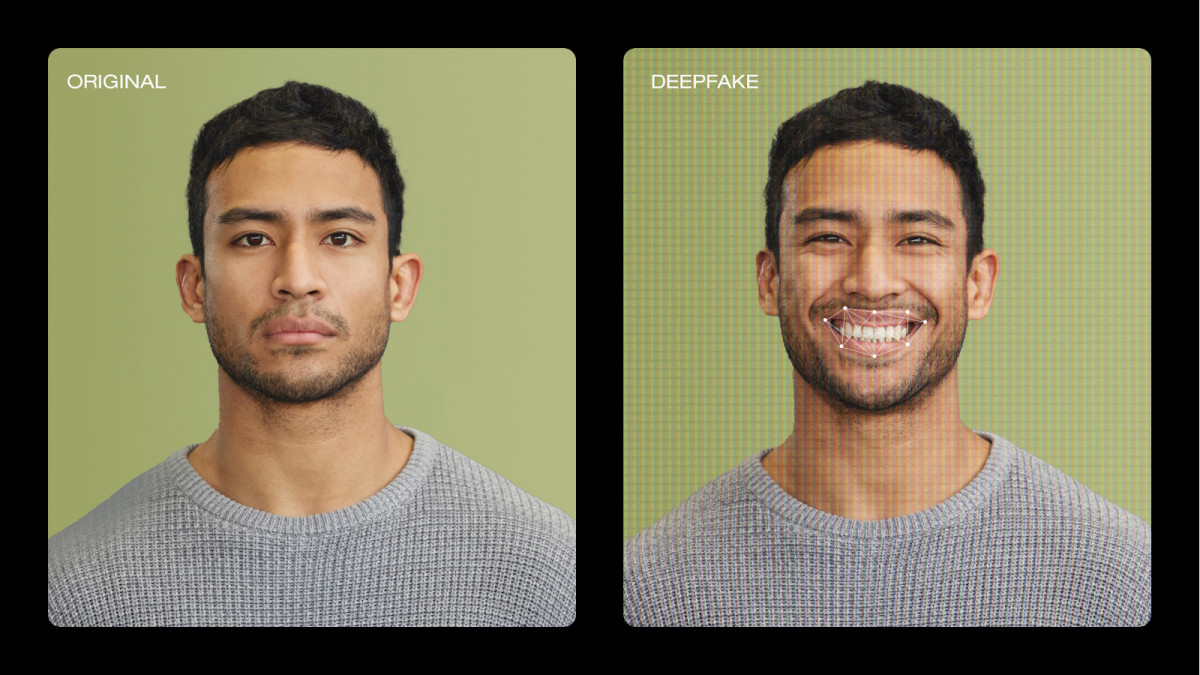Exploring the Risks of Deepfakes: The Potential for Abuse by Malicious Entities
In Brief
Deepfakes harness advanced technology to generate incredibly realistic representations of faces, voices, and other traits. This innovation offers exciting possibilities for sectors like arts, entertainment, and education.
What is a Deepfake?
The term 'deepfake' refers to a sophisticated technological method that employs artificial intelligence to create convincingly realistic media, often in audio, video, or photographic formats. This process uses deep learning algorithms and generative adversarial networks (GANs) to generate entirely new and sometimes misleading content by manipulating existing audiovisual material after training on extensive datasets.
Through this technology, individual traits such as faces and voices can be altered seamlessly, producing representations that may closely resemble real footage. While deepfakes have valuable applications in creative fields like art and education, they also present significant dangers, including the spread of misinformation, invasion of privacy, and potential to tarnish reputations.

Photo: Vimeo
As deepfake technology gains traction, numerous platforms are emerging that facilitate the creation of modified videos and images. Below is a compilation of well-known deepfake tools, showcasing the diverse applications of this technology—from straightforward face-swapping GIFs to intricate video alterations, illustrating the vast potential of deepfakes.
FaceApp
FaceApp, noted for its transformative facial features, allows users to implement various filters that modify their appearance, whether through aging effects or gender swaps, all while maintaining an intuitive user interface.
ZAO
ZAO, a Chinese app, has drawn attention for its swift and accurate replacement of faces in videos, offering users straightforward tools to craft customized deepfake content.
Reface
Reface is an engaging mobile application that enables users to switch faces within short video clips and GIFs, featuring a broad selection of content, from famous movie scenes to celebrity images, making it fun to create shareable media.
DeepFaceLab
DeepFaceLab stands out as a more sophisticated option for creating deepfakes. It is open-source and caters to experienced users eager to engage in complex deepfake projects, permitting meticulous manipulation of facial features in videos.
Wombo
Wombo specializes in animating lips for videos where displayed faces mimic singing or speaking. This platform has gained popularity for its ability to create humorous and entertaining clips.
Deepfakes Web
Deepfakes Web is an easy-to-use online service that allows users to upload their videos and images to produce deepfake content without needing extensive technical know-how.
Deepfake Studio
Deepfake Studio offers a comprehensive suite for deepfake video creation, including tools for face-swapping and video manipulation, appealing to both beginners and seasoned creators.
Do Deepfakes Pose a Risk?
Acquiring the technology to produce deepfakes is remarkably simple, raising the concern that it may be exploited for spreading misinformation, political manipulation, and imitation on social media, as well as for criminal activities. Malicious actors could leverage false content to fabricate stories, intimidate individuals, or impersonate well-known figures for con schemes or defamation.
Real-World Instances of Malicious Deepfakes
Tom Cruise Deepfake
Some of the most fascinating examples of artificial media include deepfake videos featuring Tom Cruise on TikTok. Millions have viewed these clips, which seamlessly place Cruise's face onto another individual's body, resulting in disturbingly realistic content.
Obama’s PSA with Jordan Peele
Jordan Peele, a director and comedian, teamed up with BuzzFeed to create a video where he voiced former President Barack Obama. This deepfake illustrated the risks posed in the political landscape, highlighting how effortlessly false content can be fabricated using artificial media.
The Mark Zuckerberg Deepfake as Social Commentary
Artist Bill Posters created a deepfake video of Mark Zuckerberg, CEO of Facebook, to showcase how easily social media can be manipulated. In the video, Zuckerberg discusses Facebook's control over user data, shedding light on the ongoing debate regarding the company's handling of misleading information.
Crypto Scams
Deepfakes are also making waves in the world of cryptocurrencies. For example, the CertiKSkynetAlert Twitter account posted a warning on February 7, 2024, regarding a scam that utilized a deepfake of Vitalik Buterin.
Can We Prevent the Misuse of Deepfakes?
Countermeasures against malicious deepfakes may involve tools designed to detect or verify authentic materials. These detection technologies can identify fake media without the need to compare it directly with unaltered originals. The underlying AI typically utilizes machine learning, trained on data from both verifiable genuine and fraudulent media sources. Detection methods may identify discrepancies in faces or voices, signs indicative of the deepfake creation process, and color variations.
Disclaimer
In line with the Trust Project guidelines Please be aware that the details provided on this page do not constitute legal, tax, investment, financial, or any other type of advice. It is crucial to invest only what you can afford to lose and consult independent financial advisors if you're uncertain. For additional information, we recommend checking the terms and conditions or support pages provided by the issuer or advertiser. MetaversePost is dedicated to ensuring accurate, impartial reporting, though market dynamics may change unexpectedly.







